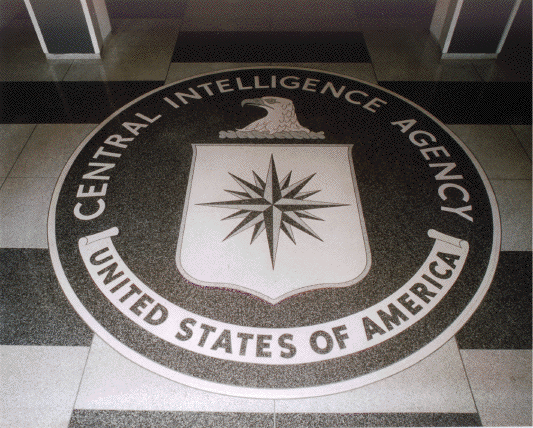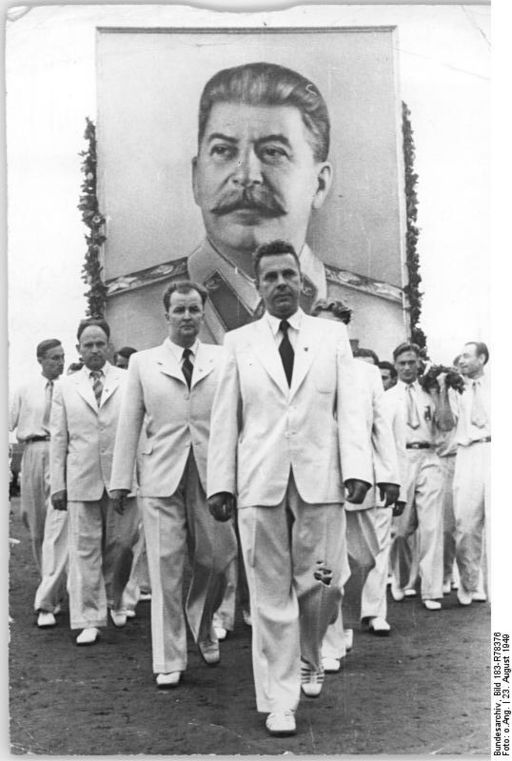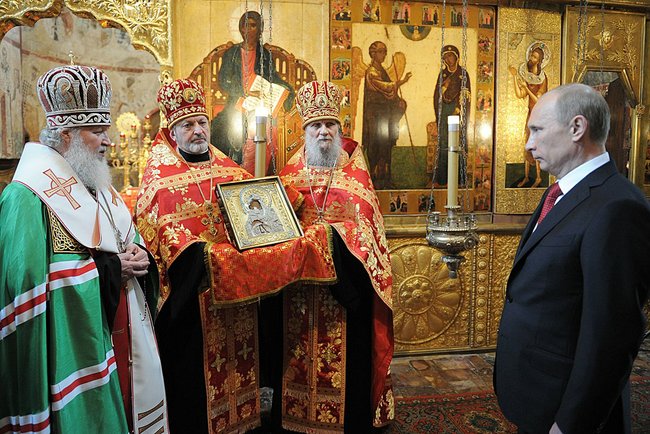This is the first in a series of articles that explores the iconic CIA and its use as a tactical weapon by the presidents of the Cold War (1947-1991).
A unique Cold War tactical weapon, the CIA was created by President Truman who did not like or trust the quality and timeliness of the intelligence he was receiving. The agency was born to serve one master, the president, not the people. The birth of the CIA was spawned by nasty surprises beginning with Truman’s sudden rise to the oval office upon Franklin D. Roosevelt’s death in Warm Springs, GA on April 12, 1945.[1] Truman and Roosevelt were estranged bedfellows thrown together to win an election. For his part, Roosevelt reportedly did not hold Truman’s intellect in high regard and Truman did not like Roosevelt’s politics. Certainly a portion of their mutual disdain was caused by then Senator Truman who chaired the Truman Committee. The committee had exposed considerable waste, fraud, and abuse by government defense contractors during WWII. It is not surprising that the two did not meet often and, in general, Truman was excluded from cabinet and most other high level meetings during his vice presidency.
While Truman knew he was ‘out of the loop’, he discovered just how much he did not know when he assumed the presidency. In his previous life as the Senator from Missouri, Truman had heard rumors of a super-secret defense project. As vice president, he’d caught a scent of it again, but twelve days into his tenure he was fully briefed for the first time on the Manhattan (atomic bomb) Project by Henry Stimson, Secretary of War. The briefing by Stimson and others coupled with the complex bureaucratic Washington, D.C. maze that horded information like gold convinced Truman that he wanted his very own intelligence gathering service. Irrespective of all the excuses he heard from various agencies and departments, Truman was determined to have the intelligence he required to do his job on a daily basis. In January of 1946, the Central Intelligence Group (CIG) was formed and, by September 1947, the National Security Act of 1947, transmuted it into the Central Intelligence Agency, CIA, headed by Rear Admiral Roscoe H. Hillenkoetter.
It was not smooth sailing for the CIG. Its very existence threatened the military, State, and War (Defense) Departments’ intelligence rice bowls and the governmental infighting was intense. According to John L. Helgerson’s CIA Briefings of Presidential Candidates, 1952-1992, “The President was virtually alone in expecting to receive a daily, comprehensive current intelligence product, whatever the formal charters of the CIG and CIA might say. Needless to say, his expectations carried the day.”[2]
The go-ahead for broad-based covert activities was on Hillenkoetter’s desk a short nine months later in the form of National Security Council directive NSC 10/2. The directive created the Office of Special Projects within which it placed covert activities. The Chief of Special Projects, who reported to the CIA director, was appointed by the Secretary of State and approved by the National Security Council. The CIA covert operations authorization was simple: 1. coordination with the Joint Chiefs of Staff, 2. National Security Council approval of any plans, and 3. provided for action "against hostile foreign states or groups or in support of friendly foreign states or groups but which are so planned and executed that any US Government responsibility for them is not evident to unauthorized persons and that if uncovered the US Government can plausibly disclaim any responsibility for them.” The directive provides a very broad loose definition of covert activities:
…Specifically, such operations shall include any covert activities related to: propaganda, economic warfare; preventive direct action, including sabotage, anti-sabotage, demolition and evacuation measures; subversion against hostile states, including assistance to underground resistance movements, guerrillas and refugee liberation groups, and support of indigenous anti-communist elements in threatened countries of the free world. Such operations shall not include armed conflict by recognized military forces, espionage, counter-espionage, and cover and deception for military operations.[3]
Adversity, properly channeled, yields increased resilience and strength. Professional embarrassment, properly channeled, yields a fortified resolve. A government rice bowl filled with taxpayer dollars for continued survival yields strong motivation. The CIA was still young and wet behind the ears when the Soviet Union detonated their first atomic bomb, which the U.S called Joe-1 after Joseph Stalin. While the CIA knew the Soviets were working on the Bomb, it was the Air Force that produced the proof enabling Truman to crow ‘I-told-you-so’ at the top of his voice to the whole world. The ‘government game’ is replete with players that run, not walk, to the boss to be the first one through the door with new information. It’s called the ‘kibble’ effect. Like Pavlov’s dogs, we in the government and the government contractor community are conditioned to receive treats when we fetch new data ‘the boss’ can use. The boss rewards those who bring the best information with kibbles, or other treats. The boss collects the data, places it in a context his boss can use and runs the information up the ladder to the next boss as soon as possible so he can get his or her kibble.
One can only imagine the pure joy the Air Force felt at being the first through the president’s door with proof of the Soviet atomic bomb test and how professionally embarrassed the CIA was. Sixty four years ago this month the Joe-1 test was conducted at the Semipalatinsk Test Site, STS, in Kazakhstan on August 29, 1949. Joe-1 yielded a 22 kiloton detonation over twice the estimated yield of the Hiroshima bomb. The STS is about the size of New Jersey, which is five times larger than the U.S.’s former Nevada Test Site,[4] and very remote so how was the test discovered? According to George Washington University’s Nuclear Vault, the answer to that question lies in the direction given the Army Air Force by Dwight D. Eisenhower, Army Chief of Staff, in 1947 to develop an Atomic Energy Detection System (AEDS) to remotely sense nuclear testing through the emissions it released. Between 1947 and 1949, the Defense Department developed and deployed an "Interim Surveillance Research Net" that was fully operational by the spring of 1949.
Harry S Truman
Shortly after the Soviet test, on 1 September 1949, a WB-29 ["W" for weather reconnaissance] operated by the Air Force's Weather Service undertook a routine flight from Misawa Air Force Base (Japan) to Eilson Air Force Base (Alaska) on behalf of the secretive Air Force Office of Atomic Energy-1 [AFOAT-1] [later renamed the Air Force Technical Applications Center, or AFTAC]. The plane carried special filters designed to pick up the radiological debris that an atmospheric atomic test would inevitably create. So far none of the flights in the Northern Pacific had picked up a scent, but after this flight returned to Eilson and a huge Geiger counter checked the filters, the technicians detected radioactive traces. This was the 112th alert of the Atomic Energy Detection System (the previous 111 had been caused by natural occurrences, such as earthquakes). After a complex chain of events, involving more flights to collect more air samples, consultations among U.S. government scientists, consultants, and contractors, including radiological analysis by Tracerlab and Los Alamos Laboratory, and secret consultations with the British government, the U.S. intelligence community concluded that Moscow had indeed conducted a nuclear test. On 23 September 1949, President Truman announced that "We have evidence that within recent weeks an atomic explosion occurred in the U.S.S.R."[5]
Joe-1 was a nasty surprise for the U.S., which had no idea the extent of the Soviet penetration into the Manhattan project and really did not expect the Soviets to develop nuclear capability until 1953 at the earliest. And Truman’s revelation of the test was a nasty surprise to the Soviet Union, which had no idea the U.S. had the capability to detect the test. And the test was a nasty surprise to the newly hatched CIA. Director Hillenkoetter contended that "I don't think we were taken by surprise" because of an error of only a "few months". As you might imagine, Hillenkoetter’s lame excuse signaled the end of his CIA leadership.
By 1950, the Truman Doctrine that would become labeled as the ‘Domino Theory’ was entrenched, the pieces of the CIA puzzle were in place and recognizable as the CIA we know and love today, and President Truman received daily CIA briefings with a sharp focus on Korea and its ramifications. ‘Beetle’, General Walter Bedell Smith, who had served as Eisenhower’s chief of staff during the invasion of Italy during WWII, was selected to replace Hillenkoetter, who returned to active duty commanding a cruiser division in the Korean War.
Can the CIA or any agency be effective at both covert action and intelligence analysis? David Fromkin’s brilliant review of Daring Amateurism: The CIA's Social History authored by Jeffrey T. Richelson in the Council on Foreign Relations book section begins:
In his 1928 Ashenden stories, W. Somerset Maugham, who had undertaken missions for British intelligence in the First World War, portrayed espionage even for our side as morally corrupting, usually incompetent, and more likely to harm our friends than our enemies. Graham Greene and John le Carré later made these their themes. We now know that this body of literature should not be classified as fiction.[6]
Truman breathed life into the CIA and made it his intelligence water bearer. His action has had profound effects on the geopolitics of the world. Truman insisted that no president should enter office as clueless as he had been and used the CIA to brief the primary presidential candidates; a practice still in place. An agency that tends to go rogue, the CIA appears to operate with little or no oversight. Remember, though, it is the President who commands it and one of the CIA operating mission directives is to maintain plausible deniability for the U.S. government for its actions. Over the next several posts, we will explore how various presidents chose to use the CIA and what the consequences have been. When it comes to the CIA, never forget Harry S Truman’s most famous words, “The buck stops here.”
How much has the CIA benefitted the US? Let us know below..
By Barbara Johnson
Barbara is the owner of www.coldwarwarrior.com, a site about the men and women from all the cold wars who worked so hard for something they believed in and played so hard they forgot the pain.
And to find out about more great articles, why not join us?! Click here.
References
[1] The Truman Library; Eleanor and Harry: The Correspondence of Eleanor Roosevelt and Harry S. Truman edited by Steve Neal; http://www.trumanlibrary.org/eleanor/index.html
[2] George Washington University NSA Archives; John L. Helgerson; CIA Briefings of Presidential Candidates, 1952-1992; http://www.gwu.edu/~nsarchiv/NSAEBB/NSAEBB116/cia/CIA%20Briefings%20of%20Presidential%20Candidates.htm
[3] The Department of State Office of the Historian; National Security Council Directive on Office of Special Projects; NSC 10/2; http://history.state.gov/historicaldocuments/frus1945-50Intel/d292
[4] Department of Defense; Semipalatinsk Test Site (STS); Posted: March 2012; http://www.dtra.mil/docs/system-documents/DoD_Fact_Sheet-SemipalatinskTestSite.pdf?sfvrsn=0
[5] George Washington University, NSA Archives, Nuclear Vault; September 23, 2009; Edited by William Burr; U.S. Intelligence and the Detection of the First Soviet Nuclear Test, September 1949; http://www.gwu.edu/~nsarchiv/nukevault/ebb286/index.htm#top
[6] Council on Foreign Relations; January/February 1996; David Fromkin; Daring Amateurism: The CIA's Social History; http://www.foreignaffairs.com/articles/51639/david-fromkin/daring-amateurism-the-cia-s-social-history













